In spring and summer, the flowers bloom and fill the air with fragrance. This is the perfect time to harvest them to enjoy their benefits. Then, you have two options: either use them fresh or dry them for later use.
A very simple and quick way to extract the active compounds from plants is to make a flower lotion. This can be toning, soothing or purifying depending on the flower used.
By using plants from your garden, you also ensure they are fresh and untreated.
Now let's see how to make the lotion.
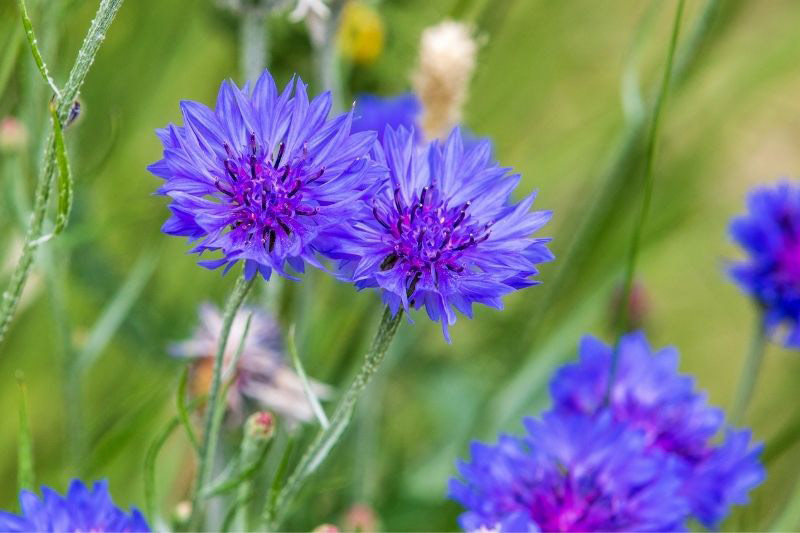
Some garden flowers and plants can be used to make homemade flower lotions
How to make a flower lotion?
As we've already mentioned, this is a very simple preparation that anyone can make, requiring no special equipment.
-
Ingredients
- Water. About 250 ml. If your tap water is very hard, you can use mineral water or even demineralised water.
- Fresh or dried flowers. A handful for the quantity mentioned above.
-
Equipment
- A small saucepan
- A sieve
- A small sterilised container to store the lotion. A small spray bottle would be ideal as it makes the lotion much easier to use.
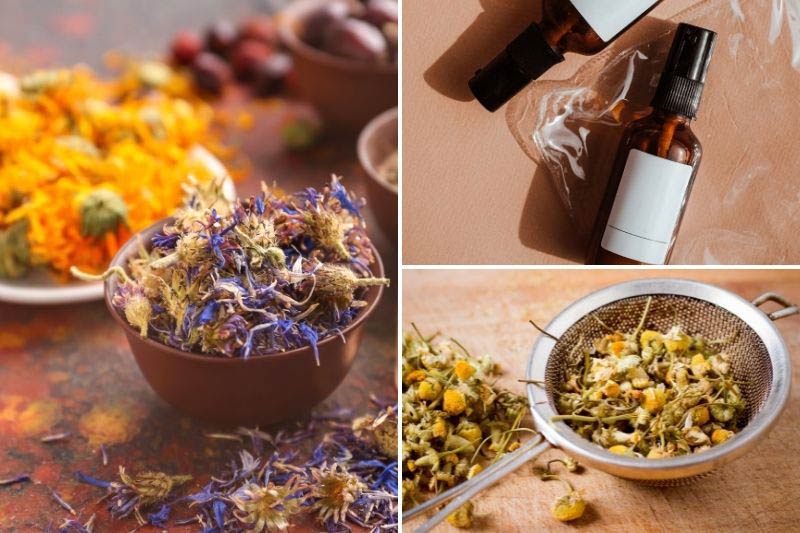
Flowers, clean small bottles or sprayers and a small sieve will be needed to make your flower lotion
-
Steps
Now let's go through the process step by step.
Step 1
Start by bringing the water to the boil. 250 ml of water is enough as the lotion only keeps for a few days. There's no need to make large quantities. You can even make a smaller amount to suit your container.
Step 2
While waiting for the water to boil, gently clean the fresh flowers under running water to remove insects, dust and other debris. This step isn't necessary for dried flowers.
Step 3
Once the water is boiling, turn off the heat and pour the flowers into the boiling water. Stir the flowers with a spoon so they are well soaked before covering the pan with a lid to prevent the active compounds from evaporating.
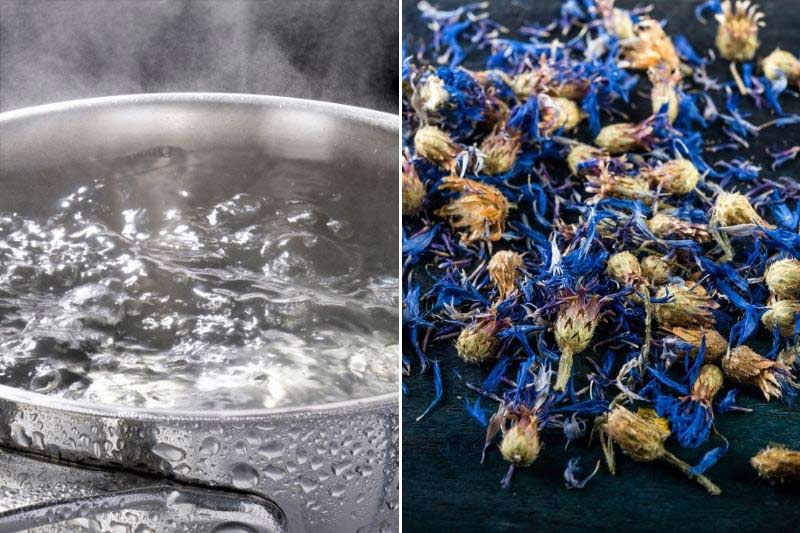
Infusing flowers in boiling water helps extract their active compounds
Leave to infuse for at least 15 minutes. You can wait longer if you want a higher concentration of these active compounds in your lotion.
Step 4
Once your preparation has infused, strain it and let it cool sufficiently so you can use it without risk of burning.
There you go, it's ready!
I recommend transferring the lotion to a small spray bottle, which will make it much easier to use while avoiding waste.
Also, be aware that the colour and fragrance of your lotion won't always be very close to those of the flower.
This preparation is also relatively fragile. The lotion will only keep for a few days, up to a week, in the fridge.
Which flowers for a toning, soothing or purifying lotion?
Although many cosmetic products are made from plants from faraway places, note that many flowers from our gardens can also be used to make lotions with various properties. Here are a few examples:
- Damask rose, Rosa damascena, as well as musk rose, Rosa moschata, are reputed to slow skin ageing and the appearance of wrinkles.
- Pot marigold, or Calendula officinalis, are said to have healing and soothing properties for irritations.
- The pretty little flowers of Roman chamomile, Chamaemelum nobile, are said to be soothing for the skin, just as the herbal tea is for the nervous system.
- The inflorescences of lime, Tilia cordata and Tilia platyphyllos, are said to have soothing virtues.
- Elder, Sambucus nigra, is said to be anti-inflammatory and to soothe irritations.
- Common daisy, Bellis perennis, is said to restore skin tone.
- Lavender, Lavandula officinalis, is said to be purifying and regenerating.
- Cornflower, Centaurea cyanus, is reputed for its soothing action on the eyes. Exceptionally, boil the flowers for 1 to 2 minutes to sterilise the preparation properly since it must be applied to the eyes. Then make sure to let the lotion cool completely before applying it to avoid any risk of burning.
- Nasturtium, Tropaeolum majus, is used as a hair tonic to slow hair loss and stimulate regrowth.

































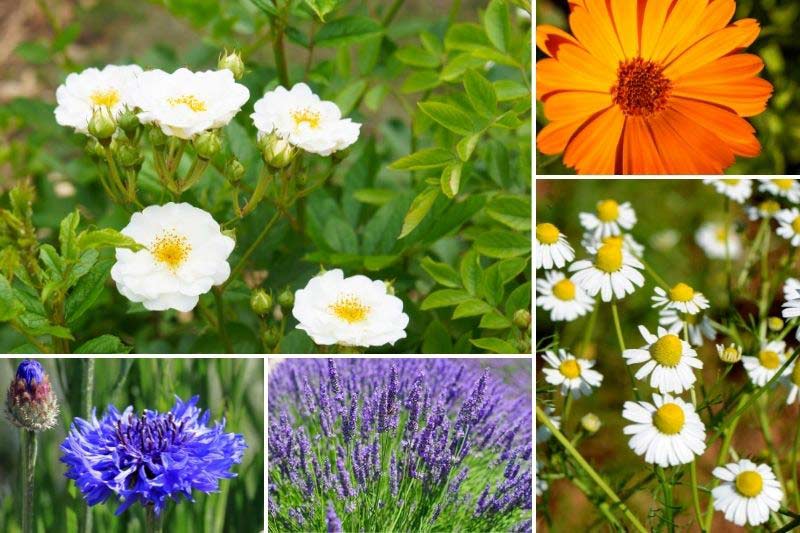

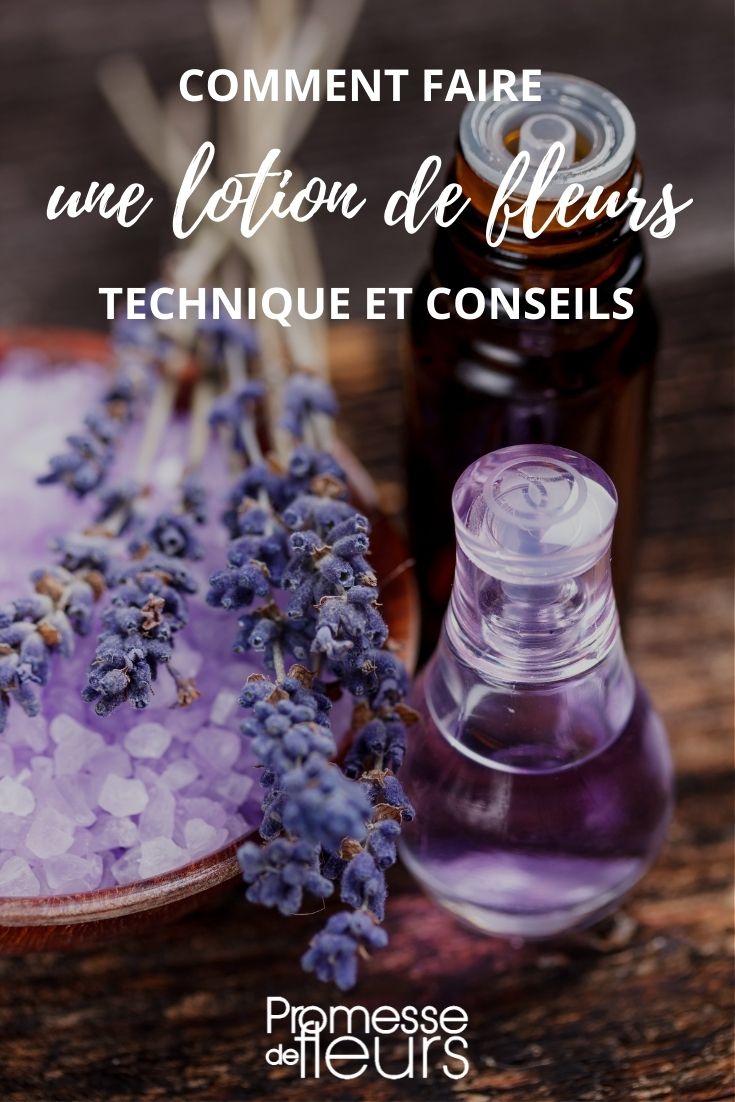
Comments